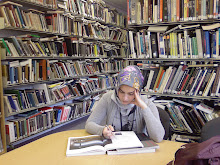
(www.ifa2008.org)
One Straight Line Cross By One Curved Line/2-way mirror glass
Dan Graham's model "One Straight Line Crossed by One Curved Line", 2007/2008, recently realized in Basel, provides, as in the other models that precede or follow the artist's built pavilions, a break with rectilinear form. Its reflective anamorphic surfaces which are both transparent and mirror the surrounding space are functional structures, hybrids between sculpture and architecture.
 (http://www.mariangoodman.com/artists/dan-graham/)
(http://www.mariangoodman.com/artists/dan-graham/)
 (http://artnews.org/gallery.php?i=211&exi=14747&Marian_Goodman&Dan_Graham)
(http://artnews.org/gallery.php?i=211&exi=14747&Marian_Goodman&Dan_Graham)




Dan Graham
«Time Delay Room»
This closed-circuit installation was varied by Dan Graham six times following the same structural set-up as described below:
«Two rooms of equal size, connected by an opening at one side, under surveillance by two video cameras positioned at the connecting point between the two rooms. The front inside wall of each features two video screens - within the scope of the surveillance cameras. The monitor which the visitor coming out of the other room spies first shows the live behavior of the people in the respective other room. In both rooms, the second screen shows an image of the behavior of the viewers in the respectively other room - but with an eight second delay.
The time-lag of eight seconds is the outer limit of the neurophysiological short-term memory that forms an immediate part of our present perception and affects this «from within». If you see your behavior eight seconds ago presented on a video monitor «from outside» you will probably therefore not recognize the distance in time but tend to identify your current perception and current behavior with the state eight seconds earlier. Since this leads to inconsistent impressions which you then respond to, you get caught up in a feedback loop. You feel trapped in a state of observation, in which your self-observation is subject to some outside visible control. In this manner, you as the viewer experience yourself as part of a social group of observed observers [instead of, as in the traditional view of art, standing arrested in individual contemplation before an auratic object].
(Gregor Stemmrich, «Dan Graham,» in Thomas Y. Levin, Ursula Frohne, Peter Weibel (eds.), CTRL[SPACE]. Rhetorics of Surveillance from Bentham to Big Brother, ZKM | Center for Art and Media, Karlsruhe, 2001, The MIT Press, Cambridge, MA, London, 2002, p. 68.)
http://www.medienkunstnetz.de/works/time-delay-room/images/12/



